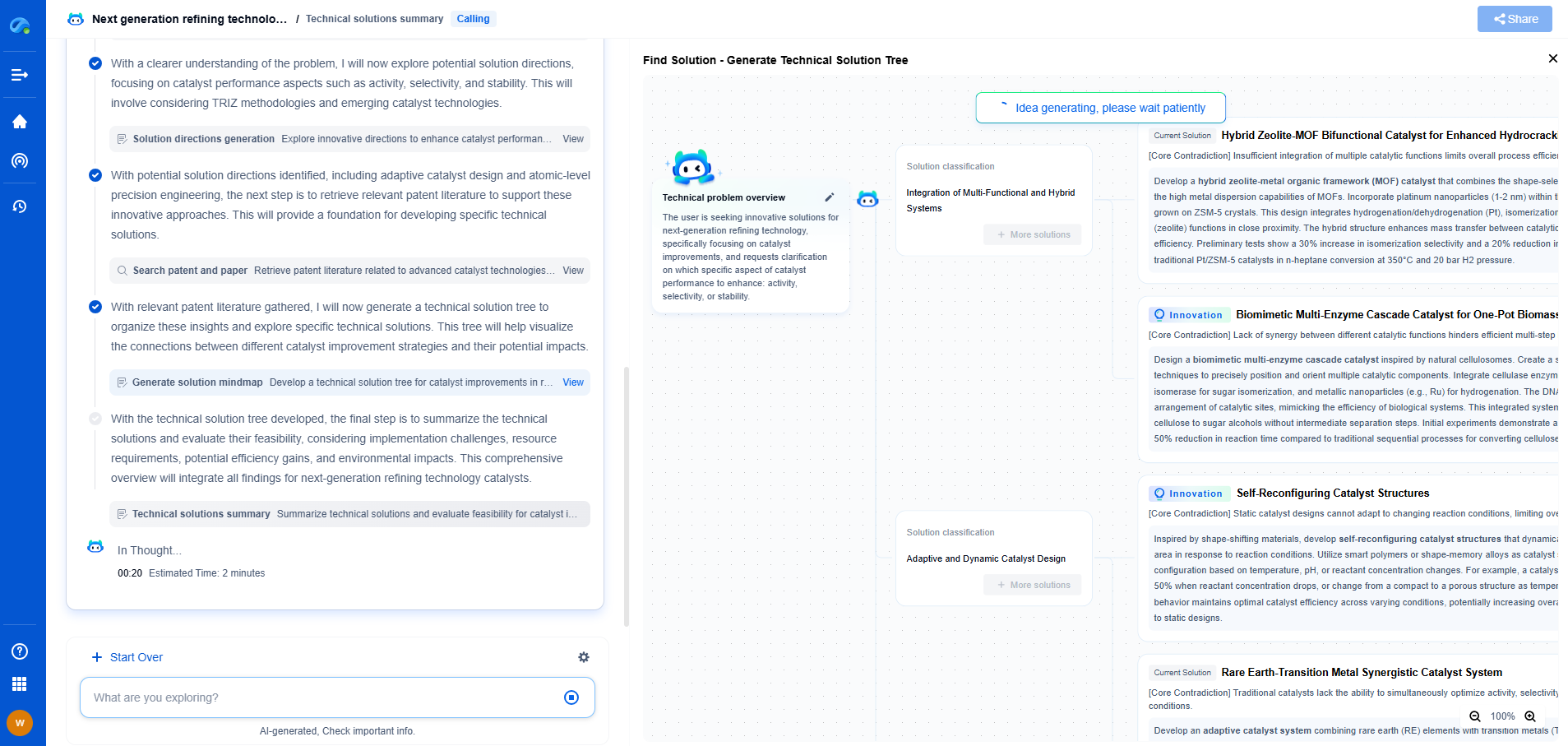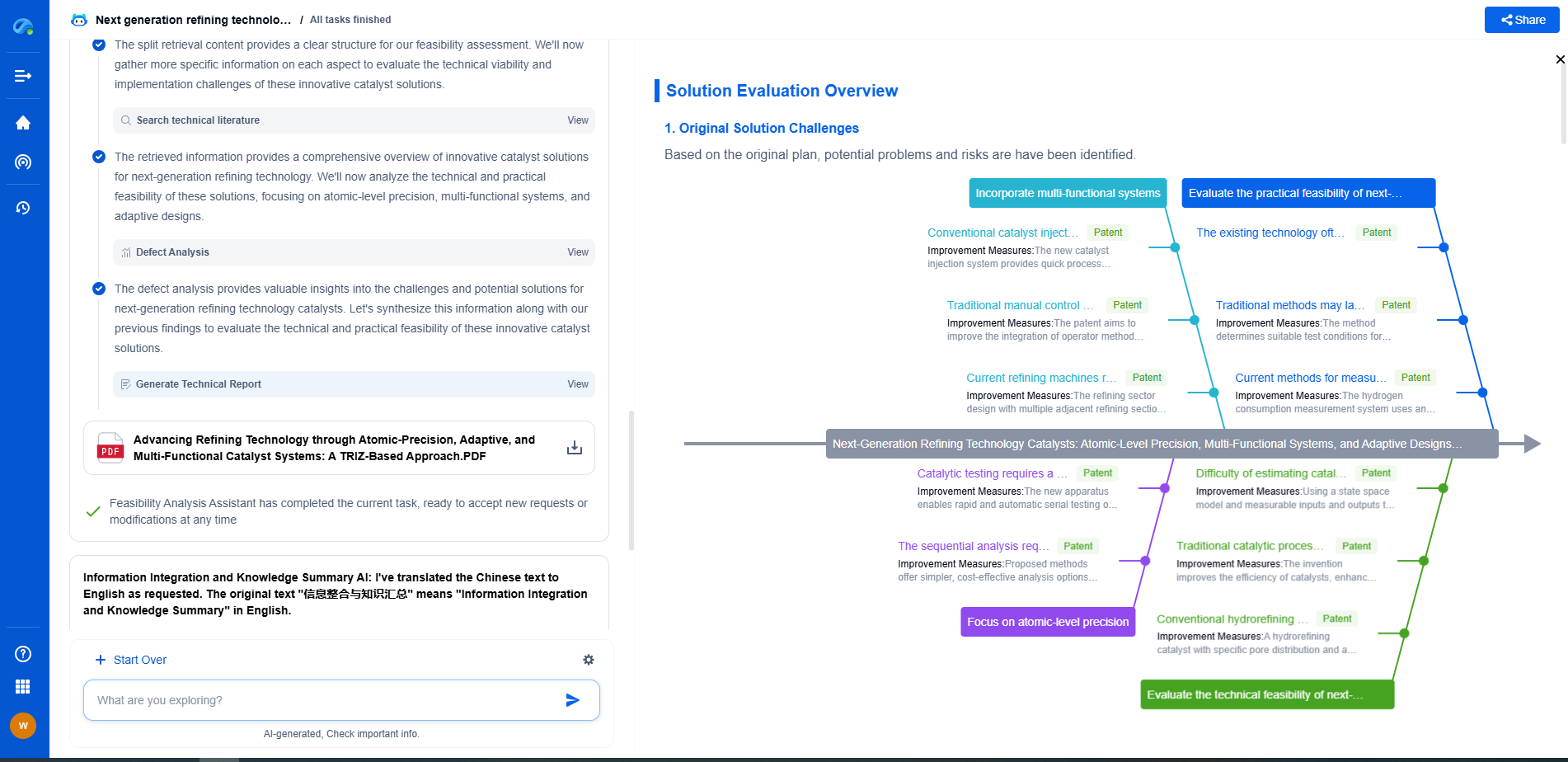Selecting Industrial Gearboxes for Robotic Applications: Key Considerations
JUL 2, 2025 |
In the rapidly advancing field of robotics, choosing the right industrial gearbox is crucial for ensuring optimal performance and efficiency. Gearboxes play an essential role in transferring power from motors to different robotic components, impacting speed, torque, and overall functional capabilities. This article delves into the key considerations that should guide the selection of gearboxes for robotic applications.
Understanding Gearbox Types
The first step in selecting the right gearbox is understanding the different types available. Common types used in robotics include spur gearboxes, planetary gearboxes, harmonic drive gearboxes, and worm gearboxes:
1. Spur Gearboxes: Known for their simplicity and cost-effectiveness, spur gearboxes are ideal for applications requiring moderate torque and speed. They have straight teeth and are less complex, but they can be noisy at high speeds.
2. Planetary Gearboxes: These gearboxes are highly efficient and compact, offering high torque density and smooth operation. Their design allows for precise control, making them suitable for applications requiring accuracy and versatility.
3. Harmonic Drive Gearboxes: Known for their precision and ability to handle heavy loads, harmonic drive gearboxes offer zero backlash and high torque capacity. They are perfect for applications demanding precise positioning and high load handling.
4. Worm Gearboxes: These gearboxes provide high reduction ratios and are self-locking, offering safety benefits in certain applications. However, they can be less efficient and are typically used in applications where noise and efficiency are not the main concerns.
Key Considerations for Gearbox Selection
When selecting a gearbox for robotic applications, several factors must be taken into account to ensure optimal functionality and longevity. These include:
1. Torque and Load Requirements: Understanding the torque and load requirements is critical. The chosen gearbox must be capable of handling the maximum torque and load that the robot will encounter during its operation, ensuring reliability and preventing mechanical failures.
2. Efficiency: Gearbox efficiency directly affects the robot's overall energy consumption and performance. High-efficiency gearboxes reduce energy loss and heat generation, contributing to longer operational life and reduced maintenance costs.
3. Backlash: Backlash refers to the play between gear teeth and can impact the precision of robotic movements. For applications requiring high precision, gearboxes with minimal or zero backlash are preferable.
4. Size and Weight Constraints: The physical dimensions and weight of the gearbox can affect the design and functionality of the robot. Compact and lightweight gearboxes are often needed to meet space and weight limitations, especially in mobile or compact robotic systems.
5. Environmental Conditions: Consideration of the operating environment is essential. Gearboxes must be able to withstand specific conditions such as temperature extremes, exposure to moisture or chemicals, and dust or debris.
6. Cost and Maintenance: Budget constraints can impact the choice of gearbox. It is important to balance cost with performance requirements, considering both initial costs and long-term maintenance expenses. Opting for a durable and easy-to-maintain gearbox can prove cost-effective in the long run.
Advancements in Gearbox Technology
Recent advancements in gearbox technology have expanded the options available for robotic applications. Innovations such as smart gearboxes with embedded sensors for monitoring performance and predictive maintenance are becoming more common. These technologies enable real-time feedback, reducing downtime and optimizing efficiency.
Conclusion
Selecting the right industrial gearbox for robotic applications requires a thorough understanding of the robot's operational requirements and the capabilities of various gearbox types. By considering factors such as torque, efficiency, backlash, size, environmental conditions, and cost, designers can ensure they choose the most suitable gearbox, enhancing the robot's performance and reliability. As technology continues to evolve, staying informed about the latest advancements will enable more efficient and innovative robotic solutions.
Boost Innovation in Gears & Transmissions with Patsnap Eureka
Whether you're designing a next-gen planetary gearbox or optimizing gear tooth profiles for noise reduction, keeping up with the fast-evolving landscape of mechanical transmissions requires more than just experience—it takes insight, speed, and smart tools.
Patsnap Eureka, our intelligent AI assistant built for R&D professionals in high-tech sectors, empowers you with real-time expert-level analysis, technology roadmap exploration, and strategic mapping of core patents—all within a seamless, user-friendly interface.
Whether you're streamlining a manual transmission system or exploring electromechanical actuation, Patsnap Eureka helps your team move from concept to novelty faster than ever.
👉 Experience Eureka in action—request a personalized demo today and see how AI can revolutionize your gear innovation workflows.
- R&D
- Intellectual Property
- Life Sciences
- Materials
- Tech Scout
- Unparalleled Data Quality
- Higher Quality Content
- 60% Fewer Hallucinations
Browse by: Latest US Patents, China's latest patents, Technical Efficacy Thesaurus, Application Domain, Technology Topic, Popular Technical Reports.
© 2025 PatSnap. All rights reserved.Legal|Privacy policy|Modern Slavery Act Transparency Statement|Sitemap|About US| Contact US: help@patsnap.com

